Biology Internships
Internships (paid or volunteer) provide opportunities to gain valuable experience. All students are required to complete an internship as part of their program of study. Goshen College students participate in a diverse range of internships that help them test their career interests.
Check out these recent examples:
Maple Scholars program
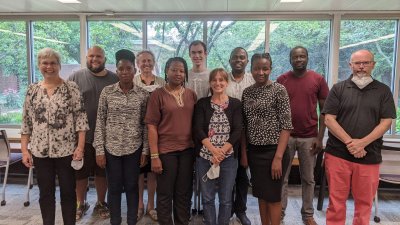 “This summer I worked with John Mischler to model aflatoxin concentrations in maize in Tanzania. The project supports work that is being done by a team of public health researchers funded by the Gates’ foundation to reduce the quantity of aflatoxins being consumed by infants. My work involved using GIS to predict where aflatoxins would be most abundant based on environmental variables that affect the health of maize, and Aspergillus flavus, the fungus that infects maize and produces aflatoxins. – Alex Neufeld
“This summer I worked with John Mischler to model aflatoxin concentrations in maize in Tanzania. The project supports work that is being done by a team of public health researchers funded by the Gates’ foundation to reduce the quantity of aflatoxins being consumed by infants. My work involved using GIS to predict where aflatoxins would be most abundant based on environmental variables that affect the health of maize, and Aspergillus flavus, the fungus that infects maize and produces aflatoxins. – Alex Neufeld
Center for Civic Innovation
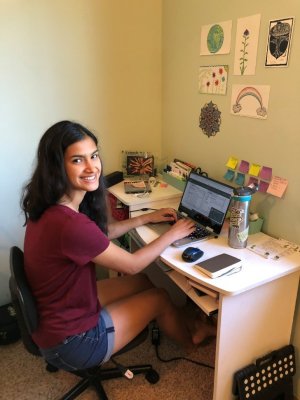
“I worked with Notre Dame’s Center for Civic Innovation with the Elkhart Catalyst summer internship program. This internship was entirely virtual due to COVID-19 restrictions. I was assigned to two projects. My full-time project involved creating an informative website about waste and recycling for the City of Elkhart. My fellow interns and I released two surveys to gather information of what to emphasize on our website. We then created a website that will be integrated into the city’s MyElkhart311 app. My side project involved designing an educational rain garden with university interns for the Tolson Center. We designed a layout of native plants and educational signs. Both projects were a valuable learning experience that involved working with people across disciplines.” – Lisa Nalliah
Black Pine Animal Sanctuary
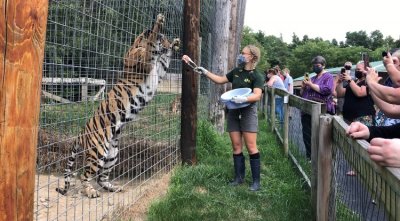
“I completed an internship at Black Pine Animal Sanctuary in Albion, IN. Black Pine is a sanctuary, not a zoo, meaning that they do not buy, sell, breed, or trade any of their animals. The animal residents are rescued from a variety of backgrounds including roadside zoos, hoarding situations, private owners, and circuses. When they arrive at Black Pine, they remain there for the rest of their lives. I cared for several large and small cats including a lioness, a cougar, tigers, and an Asian spotted leopard. Black Pine is also home to bears, wolves, foxes, and a variety of birds, reptiles, and primates. Interning at Black Pine helped me discover that a job in animal care is extremely intense, but improving the lives of the animals and building relationships with them makes it even more rewarding.”
– Ruby Meyer
Coral Restoration research
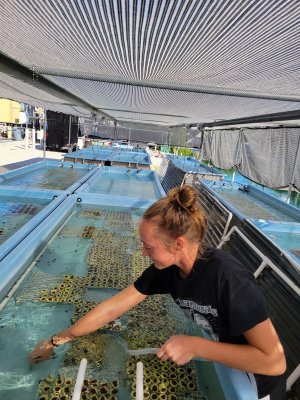
“I completed my internship in the Coral Restoration program at Mote Marine Laboratory, located in the Florida Keys. I was primarily responsible for daily husbandry and monitoring of the coral fragments on site and aiding in the mitigation of any disease or other stressor. I also had the opportunity to participate in the process of fragmenting the corals and preparing them to be outplanted in the field. As interns we also participated in article discussions and assisted other departments. Coral restoration, or restoration of any kind, is incredibly collaborative work.”
– Leah Otto
Gastric Cancer Research
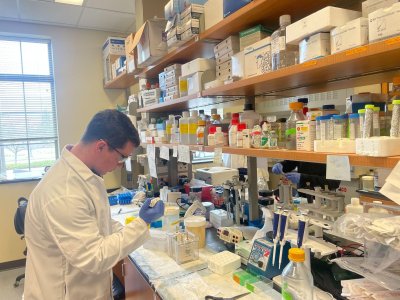
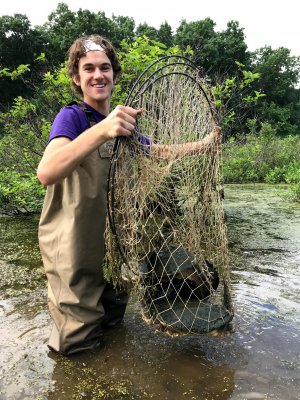 Turtle Research
Turtle Research
“I surveyed Blanding’s turtles at Merry Lea Environmental Center and analyzed the resident turtle populations for their diet selectivity. We used radio telemetry equipment to track six Blanding’s turtles throughout the summer season. I designed a 4-week experiment to analyze turtle diet in Blanding’s, Snapping, and Painted turtles, which involved checking ring net traps on a daily basis in multiple wetland sites across the property. I also assisted with other project such as helping establish a long-term salamander monitoring program and assessing how habitat edge effects impact small mammal populations.” – Liam Elias
Fish Community Research
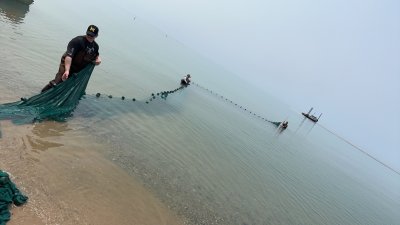
“My coworkers and I are pulling a seining net along the shore of Lake Michigan as a part of the fish community research we were conducting. During this part of research, we tend to catch fairly small baitfish such as smelt and whitefish. Another part of our research is setting gill nets out in deeper water, and this is where we catch larger fish, such as salmon, lake trout, and even lake sturgeon. We collect data from all stations at the same time to learn the types of fish in the community around those areas. We also collect adipose tissue, scales, and even fish heads to send to the DNR for testing. ”
– Nate Lange
Cardiovascular Research
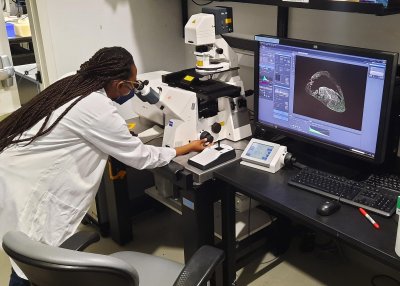
“I interned at Stanford University in the Red-Horse Lab which is part of the Biology Department. I was assigned to this lab through the Stanford Cardiovascular Institute Supporting Undergraduate Research Experience (CVI SURE) program.
The focus of my study and lab work was to understand the differences, at a single-cell scale, between healthy adult and neonatal mice in the activation of a receptor, CXCR4. A lot of the work that I did involved performing antibody stains and confocal microscopy to find the different cell types that are CXCR4-activated, with respect to mouse developmental stage, before a heart attack is induced. – Bongiwe Ncube
Vector-borne disease research at Colorado State University
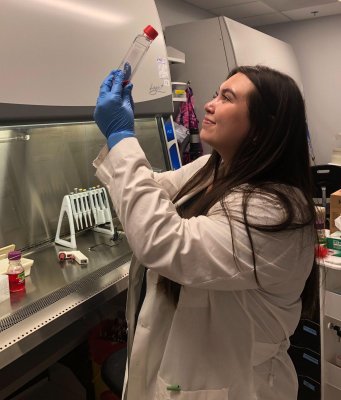
“I completed my internship working in Dr. Rushika Perera’s lab at the Center for Vector-Borne and Infectious Diseases (CVID) at Colorado State University (CSU). My project focused on Dengue virus (DENV) and the metabolic processes that break down phospholipids, which serve as mechanisms for viruses to enter cells. I worked closely with another undergraduate at CSU who worked on a project in tandem with mine. I was able to learn research techniques such as cell culturing and working with various cell lines, BSL-2 protocol, siRNA knockdown, viral plaque assays, RNA extractions, and cytotoxicity assays. The most important things that I gained from this internship were a lifelong mentor, strengthened research skills, and new friends!” – Ainslee Zou
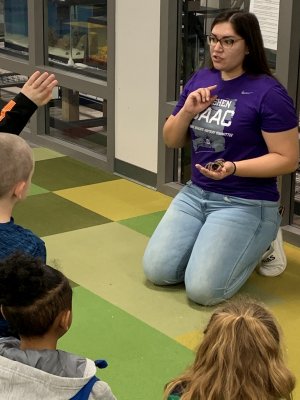 Science Education: ETHOS
Science Education: ETHOS
“I worked at ETHOS Innovation Center in Elkhart, Indiana. ETHOS is a hands-on children’s discovery museum that focuses on the sciences. The museum is open to field trips from surrounding area schools through the week and to the public every third Saturday of the month. My role during these times was to showcase the animals in our “Critter Corner” and educate visitors with fun facts. I would answer questions and allow them to pet some of the animals. This was a great opportunity to spread knowledge and wonder.” – McKinzi Vega
Goshen Health Hospital
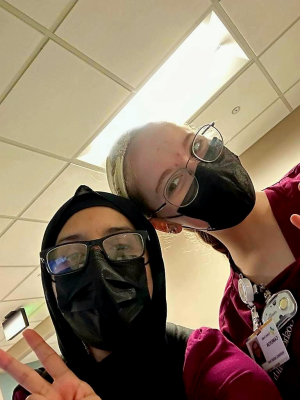
“For my internship, I worked at Goshen Health Hospital as a nurse assistant. I was responsible for answering call lights, turning or moving patients, checking vitals such as blood pressure and heart rate, checking blood sugar before each meal, and documenting food and liquids consumed. I worked on all floors during my internship, including ICU, PCU, and MED/SURG. I had the opportunity to meet all kinds of doctors, including residents. I also learned much more about the healthcare system and its processes. Overall, this internship was an amazing experience and it has opened my mind to new career ideas. – Ashgaan Al-Bahal
Tallgrass Prairie Grazing Research 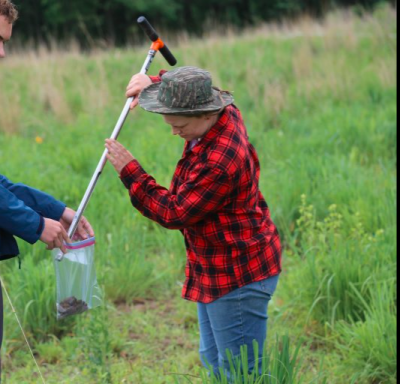
“My internship was working with the prairies on campus, at Merry Lea, and at Little Bluestem Farm as part of the Tallgrass Prairie Grazing Project. We collected various data to test for the separate and combined ecological effects of burning and cattle grazing management practices. I collected plant composition data through quadrat sampling techniques in the treatment plots, as well as soil samples to test for physical and chemical properties of the different treatments and bordering non-prairie areas. Additionally, I got to help with the prairie burnings in the spring of 2021 and to move the cattle through their grazing sequence for a few weeks in the summer.”
– Josie Strader




